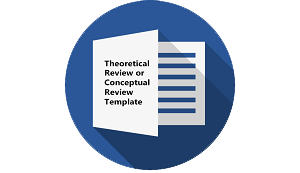DINAMIKA PEMBELAJARAN GEOGRAFI DI SMAN 9 TAKALAR SULAWESI SELATAN
DOI:
https://doi.org/10.30957/cendekia.v12i2.519Keywords:
Dynamics, Learning Geography, SMA Negeri 9 TakalarAbstract
Â
Â
The purposes of this study are to identify the dynamics of geography learning in SMA Negeri 9 Takalar, and to describe what factors are to be supporters of the quality of geography learning in SMA Negeri 9 Takalar. This study used a qualitative approach involving teachers at SMAN 1 Takalar as informants. The results showed that the dynamics of learning geography are of  less conducive in terms a) learners are less involved in the learning process, b) teachers of geography subject facilitate and motivate learners in the learning process at the minimum degree, c) the teachers do not develop models of innovative learning, and d) in the learning process, teachers rely much on teacher-centered approach. In addition, factors supporting the quality of learning of geography comprise of a) teachers and learners collaborate for the achievement of improved learning outcomes, b) multiple sources a reading and video learning about learning models and developed in geography learning have been used, and c) the teacher is able to understand the characteristics of learners by using a learning model in variety  and innovative manners.
Â
      Â
Downloads
References
Ali, M. 2009. Pendidikan Untuk Pembangunan Nasional Menuju Bangsa Indonesia yang Mandiri dan Berdaya Saing Tinggi. Bandung: PT Imperial Bakti Utama
Barnawi dan Arifin. 2012. Strategi dan Kebijakan Pembelajaran Pendidikan Karakter. Jogjakarta: Ar-Ruzz Media Group.
Borko, H. 2004. Professional development and teacher learning: Mapping the terrain. Educational researcher, 33(8):3-15.
Brooks, J.G & Brooks, M.G. 1999. In Search of Understanding : The Case Constructivist Clasroom. Virginia: Association of Supervision and Curriculum Development.
Concannon, F. F. & Campbell, M. 2005. What campus-based students think about the quality and benefits of e-learning. British Journal of Education Technology. 36(3), pp. 501-512.
Dimyati & Mudjiono. 2013. Belajar Dan Pembelajaran. Jakarta: Rineka Cipta.
Fitri, A.Z. 2012. Pendidikan Karakter Berbasis Nilai & Etika Di Sekolah. Jogjakarta : Ar-Ruzz Media.
Gufran, G., Amat M. & Putro, S.C. 2012. Pelaksanaan PLPG sebagai wahana pengembangan dan audit kompetensi dalam sertifikasi guru bidang kejuruan. Teknologi dan Kejuruan 34.2 (online).
Hamruni. 2011. Strategi Pembelajaran. Insan Madani. Yogyakarta.
Hamzah. B. U. 2006.Orientasi Baru dalam Psikologi Pembelajaran.Jakarta: PT Bumi Aksara.
Hari,A. 2011. Pemetaan Kompetensi, Sikap, Tanggung Jawab, Jumlah Jam Mengelola Pembelajaran di SMK se-Malang Raya. Tesis. Malang: Pps Universitas Negeri Malang.
Henson, K. T., & Eller, B. F. 1999. Educational Psychology for Effective Teaching. California: Wadsworth Publishing Company.
Hughes, J. 2005. The role of teacher knowledge and learning experiences in forming technology-integrated pedagogy. Journal of technology and teacher education, 13(2), 277.
Kemendikbud. 2013. Kerangka Dasar Kurikulum 2013. Jakarta: Kementerian Pendidikan dan Kebudayaan Direktorat Jenderal Pendidikan Dasar.
Maryani, E. 2006. Geografi dalam Perspektif Keilmuan dan Pendidikan di Persekolahan. Dimuat dalam Buku “Ilmu Pendidikanâ€. Karangan Mohamad Ali (ed), Bandung.
Marzano, R.J., Pickering, D., & McTinghe. 1993. Assesing Student Outcomes: Performance Assesment Using the Dimension of Learning Models. Alexandria: ASCD.
Miles, M.B & Huberman A.M. 1994. Analisis Data Kualitatif. Jakarta: Penerbit Universitas Indonesia.
Moore, K.D. 2005. Effective Instructional Strategies from Theory to Practice. California, Thousand Oaks: Sage Publication.
Mulyasa, E. 2007. Menjadi Guru Profesional menciptakan Pembelajaran Kreatif dan Menyenangkan. Bandung: Rosdakarya.
Resta, P., & Laferrière, T. 2007. Technology in support of collaborative learning. Educational Psychology Review, 19(1), 65-83.
Slameto. 2013. Belajar dan Faktor-Faktor yang Mempengaruhinya. Jakarta: Rineka Cipta.
Slavin, R.E. 2006. Cooperative Learning: Theory, Research and Practice. Boston : Allyn and Bacon.
Surakhmad, Winarno. 2000. Metodologi Pengajaran Nasional. Jakarta: UHAMKA.
Syarif, E., Sumarmi, S., Fatchan, A. and Astina, I.K., 2016. Integrasi Nilai Budaya Etnis Bugis Makassar Dalam Proses Pembelajaran Sebagai Salah Satu Strategi Menghadapi Era Masyarakat Ekonomi Asean (MEA). Jurnal Teori dan Praksis Pembelajaran IPS, 1(1), pp.13-21.
Syarif, E., Hasriyanti, H., Fatchan, A., Astina, I.K. and Sumarmi, S., 2016. Conservation Values Of Local Wisdom Traditional Ceremony Rambu Solo Toraja’s Tribe South Sulawesi As Efforts The Establishment of Character Education. EFL JOURNAL, 1(1), pp.17-23.
Syarif, E. 2018. The Role of Geography Learning in Developing Conservation Characterof Participant in SMA Negeri 9 Gowa. UNM Geographic Journal, 1(2):111-120.
Trianto. 2009.Model-Model Pembelajaran Inovatif-Progresif. Surabaya: Prenada Media Group.
Zaini, Hisyam. dkk. 2007. Strategi Pembelajaran Aktif. Pustaka Insan Madani. Yogyakarta.
Downloads
Published
How to Cite
Issue
Section
License
Authors who publish with this journal agree to the following terms:
- Authors retain copyright and grant the journal right of first publication with the work simultaneously licensed under a Creative Commons Attribution-ShareAlike 4.0 International License that allows others to share the work with an acknowledgement of the work's authorship and initial publication in this journal.
- Authors are able to enter into separate, additional contractual arrangements for the non-exclusive distribution of the journal's published version of the work (e.g., post it to an institutional repository or publish it in a book), with an acknowledgement of its initial publication in this journal.
- Authors are permitted and encouraged to post their work online (e.g., in institutional repositories or on their website) prior to and during the submission process, as it can lead to productive exchanges, as well as earlier and greater citation of published work (See The Effect of Open Access).












